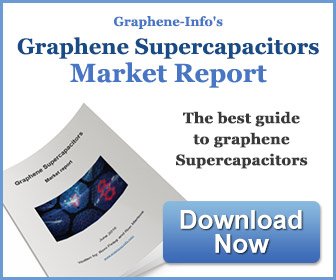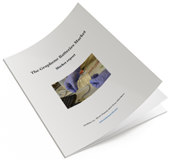Graphene supercapacitors
Graphene is a thin layer of pure carbon, tightly packed and bonded together in a hexagonal honeycomb lattice. It is widely regarded as a âwonder materialâ because it is endowed with an abundance of astonishing traits: it is the thinnest compound known to man at one atom thick, as well as the best known conductor. It also has amazing strength and light absorption traits and is even considered ecologically friendly and sustainable as carbon is widespread in nature and part of the human body.
Graphene is often suggested as a replacement for activated carbon in supercapacitors, in part due to its high relative surface area (which is even more substantial than that of activated carbon). The surface area is one of the limitations of capacitance and a higher surface area means a better electrostatic charge storage. In addition, graphene based supercapacitors will utilize its lightweight nature, elastic properties and mechanical strength.
A Graphene supercapacitor is said to store almost as much energy as alithium-ion battery, charge and discharge in seconds and maintain all this over tens of thousands of charging cycles. One of the ways to achieve this is by using a a highly porous form of graphene with a large internal surface area (made by packing graphene powder into a coin-shaped cell and then dry and press it).
What are supercapacitors?
Supercapacitors, also known as EDLC (electric double-layer capacitor) or Ultracapacitors, differ from regular capacitors in that they can store tremendous amounts of energy.
A basic capacitor usually consists of two metal plates, separated by an insulator (like air or a plastic film). During charging, electrons accumulate on one conductor and depart from the other. One side gains a negative charge while the other side builds a positive one. The insulator disturbs the natural pull of the negative charge towards the positive one, and that tension creates an electric field. Once electrons are given a path to the other side, discharge occurs.
Supercapacitors also contain two metal plates, only coated with a porous material known as activated carbon. They are immersed in an electrolyte made of positive and negative ions dissolved in a solvent. One plate is positive and the other is negative. During charging, ions from the electrolyte accumulate on the surface of each carbon-coated plate. Supercapacitors also store energy in an electric field that is formed between two oppositely charged particles, only they have the electrolyte in which an equal number of positive and negative ions is uniformly dispersed. Thus, during charging, each electrode ends up having two layers of charge coating (electric double-layer).
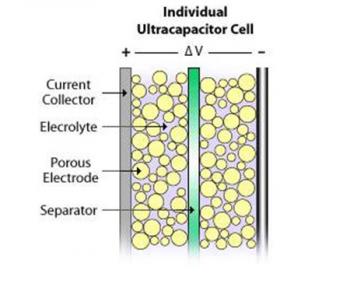
Batteries and Supercapacitors
Unlike capacitors and supercapacitors, batteries store energy in a chemical reaction. This way, ions are inserted into the atomic structure of an electrode, instead of just clinging to it like in supercapacitors. This makes supercapacitors (and storing energy without chemical reactions in general) able to charge and discharge much faster than batteries. Due to the fact that a supercapacitor does not suffer the same wear and tear as a chemical reaction based battery, it can survive hundreds of thousands more charge and discharge cycles.
Supercapacitors boast a high energy storage capacity compared to regular capacitors, but they still lag behind batteries in that area. Supercapacitors are also usually more expensive per unit than batteries. Technically, it is possible to replace the battery of a cell phone with a supercapacitor, and it will charge much faster. Alas, it will not stay charged for long. Supercapacitors are very effective, however, at accepting or delivering a sudden surge of energy, which makes them a fitting partner for batteries. Primary energy sources such as internal combustion engines, fuel cells and batteries work well as a continuous source of low power, but cannot efficiently handle peak power demands or recapture energy because they discharge and recharge slowly. Supercapacitors deliver quick bursts of energy during peak power demands and then quickly store energy and capture excess power that's otherwise lost. In the example of an electric car, a supercapacitor can provide needed power for acceleration, while a battery provides range and recharges the supercapacitor between surges.
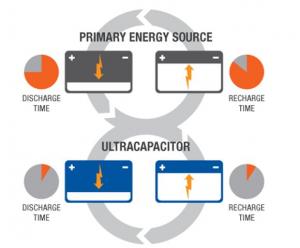
Common supercapacitor applications
Supercapacitors are currently used to harvest power from regenerative braking systems and release power to help hybrid buses accelerate, provide cranking power and voltage stabilization in start/stop systems, backup and peak power for automotive applications, assist in train acceleration, open aircraft doors in the event of power failures, help increase reliability and stability of the energy grid of blade pitch systems, capture energy and provide burst power to assist in lifting operations, provide energy to data centers between power failures and initiation of backup power systems, such as diesel generators or fuel cells and provide energy storage for firming the output of renewable installations and increasing grid stability.
Rivaling materials
Several materials exist that are researched and suggested to augment supercapacitors as much (or even more than) graphene. Among these materials are: hemp, that was used by Canadian researchers to develop hemp fibers that are at least as efficient as graphene ones in supercapacitor electrodes, Cigarette filters, which were used by Korean researchers to prepare a material for supercapacitor electrodes that exhibits a better rate capability and higher specific capacitance than conventional activated carbon and even higher than N-doped graphene or N-doped CNT electrodes.
Graphene supercapacitors commercialization
Graphene supercapacitors are already on the market, and several companies, including Skeleton Technology, the CRRC, ZapGoCharger, and Angstron Materials are developing such solutions. Read our Graphene Supercapacitors market report to learn more about this exciting market and how graphene will effect it.
Further reading
The latest graphene supercapacitor news:
Skeleton Technologies enters agreement with CAF Power & Automation for supercapacitors for trams
Skeleton Technologies has signed a contract with CAF Power & Automation, a global manufacturer of electric power solutions for the rail industry, to supply supercapacitors in trams powered by CAF P&’s OESS-s (On Board Energy Storage Systems).
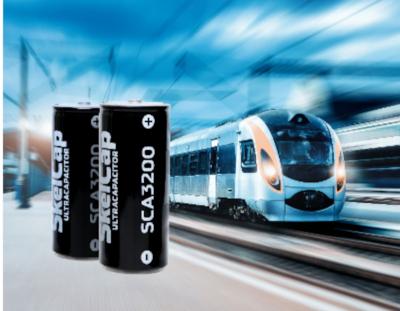
Skeleton’s cells will reportedly be included in Greentech OESS portfolio already used by some of the leading railway companies worldwide to offer cutting edge solutions to energy recovery, peak shaving and catenary-free applications.
Skeleton Technologies raises €29 Million in Series D extension
Skeleton Technologies recently announced the closing of a further â¬29 Million in its Series D round of funding. With this development, the total funding in Round D now amounts to â¬70.4 Million including the â¬41.3 Million announced in November 2020.
This round follows the company’s â¬51 Milion funding by Germany’s Federal Ministry for Economic Affairs and Energy (BMWi) and the Free State of Saxony, announced in March 2021.
Graphene-Info updates all its graphene market report
Today we published new versions of all our graphene market reports. Graphene-Info provides comprehensive niche graphene market reports, and our reports cover everything you need to know about these niche markets. The reports are now updated to April 2021.
The Graphene Batteries Market Report:
- The advantages using graphene batteries
- The different ways graphene can be used in batteries
- Various types of graphene materials
- What's on the market today
- Detailed specifications of some graphene-enhanced anode material
- Personal contact details into most graphene developers
The report package provides a good introduction to the graphene battery - present and future. It includes a list of all graphene companies involved with batteries and gives detailed specifications of some graphene-enhanced anode materials and contact details into most graphene developers. Read more here!
Novel tin/graphene electrode could enable next-gen supercapacitors
An international collaboration of researchers from Penn State and the University of Electronic Science and Technology of China has resulted in a novel material for supercapacitors' electrodes.
The supercapacitor is a very powerful, energy-dense device with a fast-charging rate, in contrast to the typical battery â but can we make it more powerful, faster and with a really high retention cycle? asked Jia Zhu, corresponding author and doctoral student conducting research in the laboratory of Huanyu Larry Cheng, Dorothy Quiggle Career Development Professor in Penn State's Department of Engineering Science and Mechanics.
Skeleton Technologies to develop new production technology with €51 million support from German government
Skeleton Technologies recently announced plans to develop new production technology and fully automate manufacturing in its GroÃröhrsdorf factory. The manufacturer of graphene-enhanced supercapacitors has unveiled plans to develop a first-of-its-kind production technology for the manufacturing of its products, following the official support announced by German authorities. These plans include a fully-automated ultracapacitor production line in its GroÃröhrsdorf factory. The economies of scale provided by this new technology, combined with the use of Skeleton’s patented curved graphene material, is expected to dramatically drive the production costs down.
recently announced plans to develop new production technology and fully automate manufacturing in its GroÃröhrsdorf factory. The manufacturer of graphene-enhanced supercapacitors has unveiled plans to develop a first-of-its-kind production technology for the manufacturing of its products, following the official support announced by German authorities. These plans include a fully-automated ultracapacitor production line in its GroÃröhrsdorf factory. The economies of scale provided by this new technology, combined with the use of Skeleton’s patented curved graphene material, is expected to dramatically drive the production costs down.
We are continuously investing in R&D whether it is improving the performance of our products or the process in which we make those products. The next stage of our production will see an implementation of fully automated Industry 4.0 manufacturing techniques a first-of-its-kind in the ultracapacitor industry. Coupled with our curved graphene material, we are able to dramatically decrease the cost of ultracapacitors. The ultracapacitor industry is in the same situation as lithium-ion batteries were in 1999, but our advancements in core technology and production capabilities will be able to show a cost reduction faster than for any other energy storage technology. We have a clear road map to lower it by almost 90% after completion of our 5 years project, says Taavi Madiberk, CEO and co-founder of Skeleton Technologies, in a press release.
Skeleton Technologies to enter Asian automotive market through strategic cooperation with and investment from Marubeni
 Skeleton Technologies, Estonia-based manufacturer of graphene-enhanced supercapacitors, and Marubeni Corporation, one of Japan’s largest conglomerates, have signed a strategic cooperation agreement to support commercial scale-up and customer acquisition for Skeleton’s supercapacitors in the Asian automotive sector, with a strong focus on electrified vehicles and hydrogen transportation.
Skeleton Technologies, Estonia-based manufacturer of graphene-enhanced supercapacitors, and Marubeni Corporation, one of Japan’s largest conglomerates, have signed a strategic cooperation agreement to support commercial scale-up and customer acquisition for Skeleton’s supercapacitors in the Asian automotive sector, with a strong focus on electrified vehicles and hydrogen transportation.
As part of this agreement, Marubeni Corporation also made an equity investment on top of the â¬41.3 million Series D financing round announced by Skeleton in November 2020. The sum of Marubeni’s investment was not disclosed.
Log 9 develops ultra-fast charging battery technology for EVs
India-based start-up Log 9 has announced the development of its new graphene-enhanced battery for electric vehicles. Log 9 states its Rapid Charging Battery Technology is capable of fully charging in under 15 minutes and that it has a lifetime of over 15 years of use.
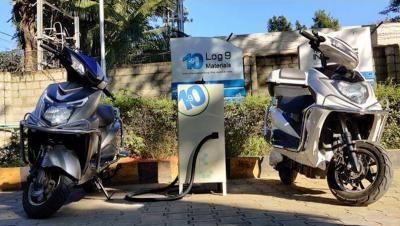
Other claims made by Log 9 include up to 5x power which would help in increased load-bearing capacity and acceleration. Additionally, the Company says that it is 5-times safer than lithium-ion batteries in terms of fire-resistance and impact-resistance. Log 9 says that its new batteries would offer a range of up to 70 kilometers for two-wheel EVs and 60-80 kilometers for three-wheel EVs.
New rGO-based material could improve energy storage devices and supercapacitors
Researchers from Tomsk Polytechnic University (TPU), along with collaborators from the University of Lille in France, have synthesized a new material, based on reduced graphene oxide (rGO), for energy storage devices and supercapacitors.

The rGO modification technique that involves the use of organic molecules, derivatives of hypervalent iodine, reportedly enabled acquiring a material that is capable of storing 1.7 times more electrical energy.
Ionic Industries announces successful capital raising
 Ionic Industries has announced a successful fund raising of over AUD$2 million (around USD$1.55 million) through a capital raising with Melbourne Capital Limited.
Ionic Industries has announced a successful fund raising of over AUD$2 million (around USD$1.55 million) through a capital raising with Melbourne Capital Limited.
The funds will be used for a range of functions in support of Ionic's ongoing supercapacitor technology development and scaled-up manufacturing, including: intermediate scale up equipment, ongoing research, commercial negotiations, and more.
Graphene-Info updates all its graphene market report (January 2021)
Today we published new versions of all our graphene market reports. Graphene-Info provides comprehensive niche graphene market reports, and our reports cover everything you need to know about these niche markets. The reports are now updated to January 2021.
The Graphene Batteries Market Report:
- The advantages using graphene batteries
- The different ways graphene can be used in batteries
- Various types of graphene materials
- What's on the market today
- Detailed specifications of some graphene-enhanced anode material
- Personal contact details into most graphene developers
The report package provides a good introduction to the graphene battery - present and future. It includes a list of all graphene companies involved with batteries and gives detailed specifications of some graphene-enhanced anode materials and contact details into most graphene developers. Read more here!
Pagination
- Previous page
- Page 6
- Next page
